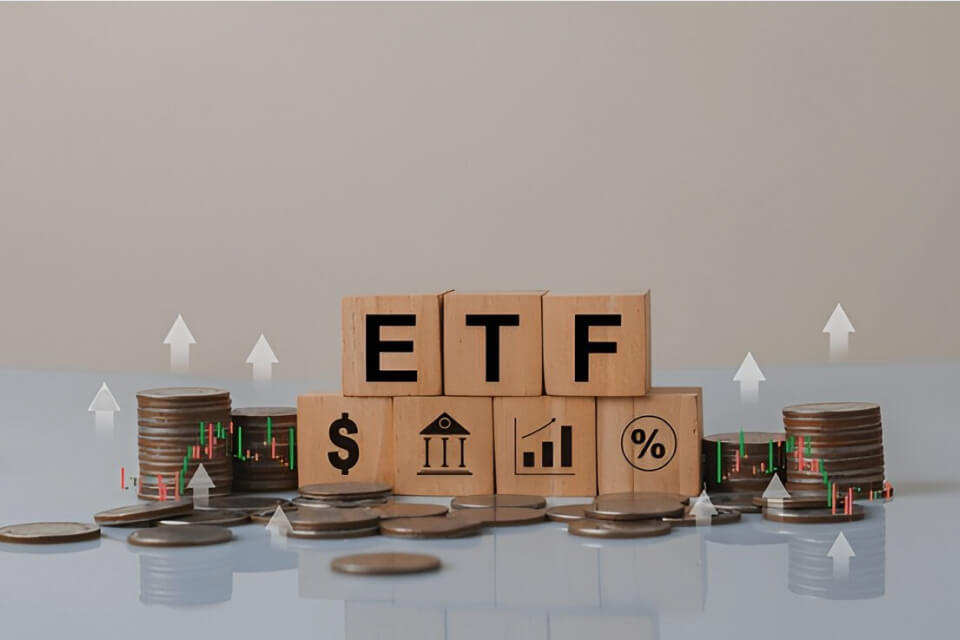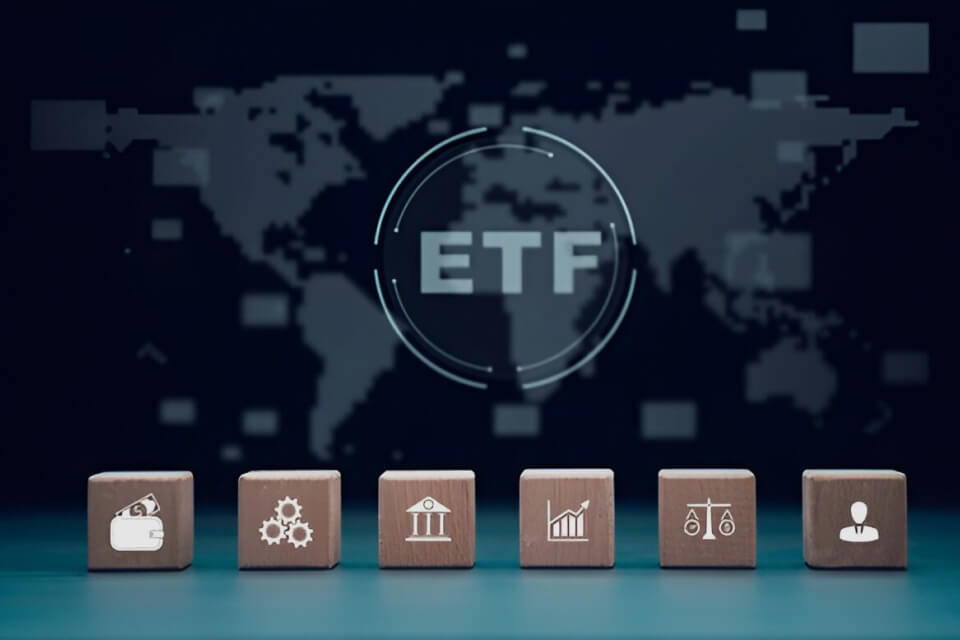- Introduction
- Key Metrics for Analyzing the Performance of ETF Investments
- Comparative Analysis of ETF Performance
- Risk-Adjusted Measures for ETF Performance
- Considerations for Long-Term Performance Evaluation
- Using Performance Analysis for Decision-Making
- Tools and Resources for Analyzing ETF Performance
- Leveraging Resources for Comprehensive Analysis
- Frequently Asked Questions (FAQs)
- Conclusion
Introduction
Investing in Exchange-Traded Funds (ETFs) has, without a doubt, become a go-to choice for many investors who want to spread out their risk. But success with ETFs is not just about making that first investment. Instead, it depends on checking your portfolio often and making smart changes when needed. So, in this article, we’re going to explore how to look closely at ETF performance. We will talk about key metrics, compare different ETFs, look at risk, and think about the long term. Altogether, these tips will help you make better decisions. So, let’s begin this journey to help you get the most out of your ETF investments.
Evaluating ETF Performance: An Overview
Understanding how to check ETF performance is, first of all, the key to making smart investment decisions. Also, the metrics you choose to follow are very important in seeing how well your plan is working.
At its core, checking ETF performance means looking at how well your investments match your financial goals. So, it’s not just about making money. It’s also about making sure your portfolio fits your personal goals.
Connection to Investment Success
Successful investing is not just about picking the right ETFs in the beginning. It’s also a process that takes time and effort. You have to keep checking your investments and making changes when needed. That way, you’ll be in a better place for long-term success.
Whether you’re just getting started or already have lots of experience, knowing how to check performance is super important. New investors learn how to build a strong base. Meanwhile, experienced investors keep making their strategies better and stronger.
Key Metrics for Analyzing the Performance of ETF Investments
Investing in Exchange-Traded Funds (ETFs) can be a powerful strategy, offering diversification and exposure to various sectors. To navigate the complex landscape of ETFs successfully, understanding and analyzing key metrics is paramount.
Understanding ETF Performance Metrics
Understanding how your ETFs are doing overall is, above all, very important. First, it gives you a quick look at how well your investments are working. Then, it becomes a great starting point for digging deeper into your analysis. Also, looking at past performance helps you see if the fund gives steady returns over time.
Next, looking at specific numbers gives you an even better understanding. For example, things like expense ratios and tracking errors become really important when checking how well an ETF is being managed.
Comparative Analysis of Different Metrics
Comparing numbers across different ETFs is, in many ways, like setting a benchmark. In fact, it’s not just about how much an ETF earns; instead, it’s about how it performs compared to others. So, looking closely at key numbers—like expense ratios, tracking error, and yield—gives a much clearer view.
Also, each of these numbers tells you something different. For example, they help you understand how well the ETF is managed, how closely it follows its index, and how much income it might pay you.
Real-World Examples Illustrating Metric Impact
Imagine you’re picking between two ETFs. Let’s call them ETF A and ETF B. Both of them have similar returns, which means they’ve made about the same amount of money for investors. However, now let’s look at something important called the expense ratio.
The expense ratio is the fee the manager charges to run the ETF. So, even though ETF A and ETF B earn about the same, ETF A has lower fees. But why does this matter for you? Well, that small fee difference can really add up over time.
Here’s why: as the years go by, those fees slowly take more of your money. Since ETF A has a lower fee, you pay less to stay invested. As a result, this can help you save a lot more in the long run. So, even if both ETFs perform the same, you get to keep more money with ETF A.

Comparative Analysis of ETF Performance
Now, let’s talk about something called comparative analysis. Basically, this means comparing how well different ETFs are doing within the same group or category.
For example, imagine you have a bunch of ETFs that all focus on tech companies. Each ETF is like a team of stocks working together. So, with comparative analysis, you look at each team to see which one is doing the best. This helps you spot top performers and shows you where you might want to improve your portfolio.
Also, benchmarking is a big part of comparative analysis. By picking a standard to compare against, you can see how your ETFs are doing next to it.
Finally, when you go back to the example of two ETFs with similar goals, comparing them in different market situations shows you which one is stronger and fits your long-term goals better.
Risk-Adjusted Measures for ETF Performance
ETF Investing always involves risk, so understanding how risk affects performance is very important for making smart choices. First of all, risk is not the same for everyone. Different investors have different risk levels they are comfortable with. Therefore, knowing your own comfort with risk is the first step to managing it well.
When analyzing ETF performance, risk-adjusted measures like the Sharpe ratio give a much clearer and more detailed view. In fact, these measures include risk, so they show you how much return you get for each unit of risk you take.
Because of this, to really judge an ETF’s performance, you must carefully think about the risk level. After all, a high-performing ETF might not be the best choice if its risk does not match your investment plan.
Considerations for Long-Term Performance Evaluation
While short-term gains can be very tempting, a successful ETF strategy needs, above all, a strong focus on the long term. In fact, long-term evaluation is more than just a quick check-in; instead, it’s a smart plan to keep your portfolio in line with your changing financial goals.
When thinking about what affects long-term performance, you should consider dividend growth, economic trends, and changes in market conditions. All of these can greatly impact how your ETFs do over time.
That said, long-term evaluation also brings some challenges, such as market ups and downs and shifting economic situations. However, by recognizing these challenges, you can better handle them and, in the end, make smarter investment choices.

Using Performance Analysis for Decision-Making
Evaluating performance is not the final goal; instead, it helps you make smart choices that match your investment goals. Also, your analysis should clearly guide your decisions. So, if an ETF keeps underperforming, then it may be time to rethink if it still belongs in your portfolio.
Strategies for Effective Decision-Making
First, creating good investment strategies means finding balance. You need to mix numbers—like return on investment, risk, and fees—with other things like the fund manager’s skill, market trends, and your personal goals. Also, it’s important to balance risk and reward, adjust to market changes, and think about long-term versus short-term goals to make smart ETF decisions.
Real-World Examples of Informed Decisions through Analysis
For example, imagine you review your ETF’s performance and then decide to move money from a fund that’s doing poorly to one that has better long-term potential. As a result, this one change could make a big difference in how well your whole portfolio performs.
Tools and Resources for Analyzing ETF Performance
In today’s tech-driven world, investors have access to many helpful tools that make it easier to study and understand ETF performance. These tools work well for all types of investors, from hands-on users to those who want more automated help.
ETF Summary and Fundamentals
Example: Yahoo Finance
Purpose: First, these tools give a quick look at the history of ETFs and stocks. So, they show how different ETFs are doing and how they help your overall returns.
ETF Screeners and Database
Example: ETFdb
Purpose: Next, ETF screeners let you sort and compare ETFs using different filters. That way, it’s easier to find funds that match your goals and investing style.
Advanced Analytics Software
Example: Bloomberg Terminal, FactSet
Purpose: Also, these tools are mostly for big investors and companies. They offer detailed data, live updates, and powerful charts. So, they help with deep and advanced ETF performance analysis.
Research Platforms
Example: Seeking Alpha
Purpose: Finally, these sites give expert opinions and market insights. Also, they add helpful ideas to go along with your number-based research. This way, you get both facts and expert thoughts before making a decision.
Leveraging Resources for Comprehensive Analysis
Having access to these tools is just the first step. But just as important is knowing how to use them the right way. So, here are some easy strategies to help you get the most out of these tools for a full ETF analysis:
Define Your Objectives
Strategy: First, clearly set your investment goals and how much risk you’re okay with.
Purpose: That way, the tools can help you focus on what really matters to your goals.
Continuous Learning
Strategy: Always stay up to date with how your tools work.
Purpose: Also, learning about new features helps you use the tools better and smarter.
Integration of Tools
Strategy: Try using more than one tool together for better results.
Purpose: Combining different tools gives you a full picture of ETF performance from all angles.
Automation for Efficiency
Strategy: Use automation for simple, everyday tasks.
Purpose: So, this saves you time and lets you focus more on important decisions.
Seek Professional Guidance
Strategy: Follow and read our blog for more helpful tips and tools.
Purpose: We share smart advice on which tools work best for your own investment style and goals.

Frequently Asked Questions (FAQs)
1. How often should I reassess my ETF portfolio?
Regularly reassess your portfolio annually or sooner if there are significant market shifts or changes in your financial goals.
2. What are the most common qualitative considerations for ETF selection?
Consider fund manager expertise, alignment with investment goals, and responsiveness to changing market conditions.
3. Can I solely rely on quantitative analysis for ETF decision-making?
While quantitative metrics are crucial, incorporating qualitative insights adds depth to decision-making, offering a more comprehensive view.
4. How do I determine if an ETF’s expenses are reasonable?
Compare expense ratios with industry standards and consider the impact on long-term returns to assess the reasonableness of fees.
5. Is there a recommended balance between risk and reward in ETF investing?
The optimal balance varies based on individual risk tolerance and investment objectives; there is no one-size-fits-all recommendation.
Conclusion
In conclusion, doing well with ETFs means taking a full and balanced approach to performance analysis. So, by learning key metrics, comparing ETFs, thinking about risk, looking at the long term, and using your analysis to guide your choices, you set yourself up for long-term success.
Now, with all the knowledge you’ve gained from this article, it’s time to take action. So, be proactive with your ETF portfolio. And always remember—by using these tips, you can improve your strategy and boost your chances for long-term success.



